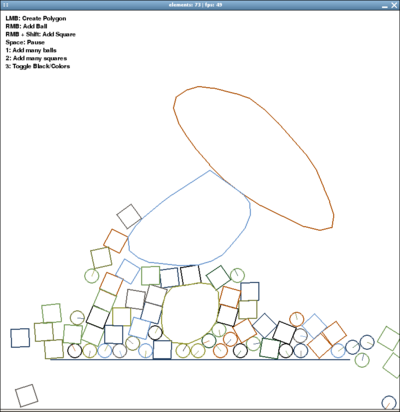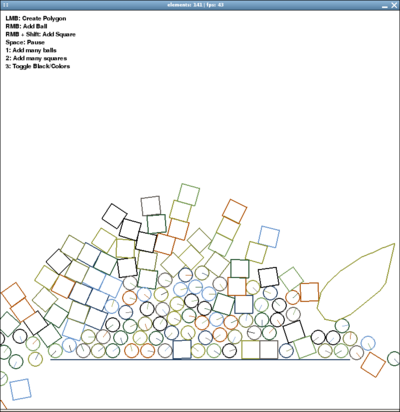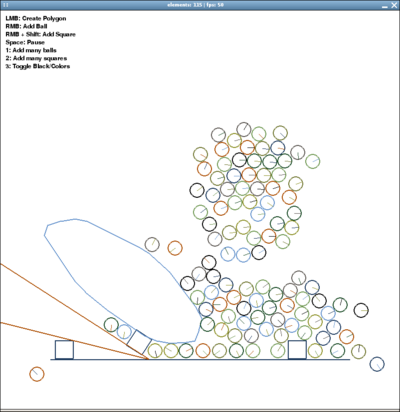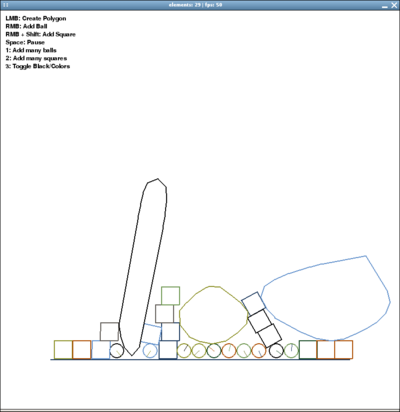Pymunx: Difference between revisions
Jump to navigation
Jump to search
Crazy-chris (talk | contribs) mNo edit summary |
Crazy-chris (talk | contribs) m (→Limitations) |
||
| Line 36: | Line 36: | ||
Things, pymunk can handle, but the pymunx api not: |
Things, pymunk can handle, but the pymunx api not: |
||
* Joints |
* Joints |
||
* Non-convex Polygons |
|||
* Grouped Elements |
* Grouped Elements |
||
* maybe more :) |
|||
(As a workaround, you can anyway access the whole space, which is stored in pymunx.space) |
(As a workaround, you can anyway access the whole space, which is stored in pymunx.space) |
||
== pyGame Example == |
== pyGame Example == |
||
Revision as of 01:39, 10 March 2008
About
pymunx is an API for easily integrating physics into python (and pygame), using the chipmunk physics engine with the pymunk bindings. (See Python Physics for more infos.)
Status
The status is early and experimental, but already testable. Many functions of pymunk are not yet implemented, I'm quite on it and will post updates frequently the next time, so check back often :) I'll post my updates and demos here, on http://www.linuxuser.at/pymunx, and there's also a forum shared with pymunk and chipmunk.
Documentation
Sources
API class with documentation
- pymunx.py (the api class)
Examples
- demo1_ballsnsquares.py (most simple :)
- demo2_drawwalls.py (create new walls)
- demo3_addmany.py (add more objects at once)
- demo4_drawpoly.py (draw a polygon)
- demo5_draw.py (tryout for segments (buggy))
- demo6_throw_and_settings.py (++) (adjust elasticity, density, size and throw in objects)
- demo7_elasticbox.py (++) (elastic walls all around. very funny :)
Download
You can get the latest pymunx api class and examples bundled with the chipmunk libraries and pymunk via svn (examples/):
svn checkout http://pymunk.googlecode.com/svn/trunk/ pymunk-read-only
Limitations
Things, pymunk can handle, but the pymunx api not:
- Joints
- Grouped Elements
- maybe more :)
(As a workaround, you can anyway access the whole space, which is stored in pymunx.space)
pyGame Example
The typical usage in pygame looks like this:
import pygame
from pygame.locals import *
from pygame.color import *
from pymunx import *
pygame.init()
screen = pygame.display.set_mode((800, 800))
clock = pygame.time.Clock()
world = pymunx()
world.add_wall((100, 200), (300, 200))
# Main Game Loop:
while running:
# Event Handling
# Maybe calling world.add_ball(event.pos) or world.add_square(event.pos)
# ...
screen.fill((255,255,255))
# Update & Draw World
world.update()
world.draw(screen)
# Flip Display
pygame.display.flip()
# Try to stay at 50 FPS
clock.tick(50)




